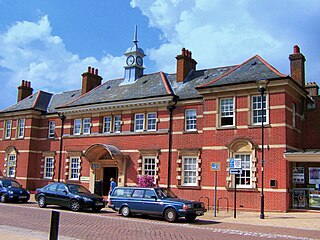
Eastleigh is a town in Hampshire, England, between Southampton and Winchester. It is the largest town and the administrative seat of the Borough of Eastleigh, with a population of 24,011 at the 2011 census.
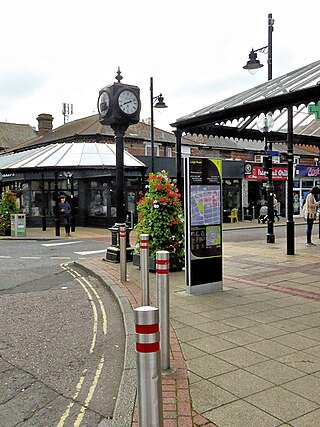
The Borough of Eastleigh is a local government district with borough status in Hampshire, England. It is named after its main town of Eastleigh, where the council is based. The borough also contains the town of Hedge End along with several villages, many of which form part of the South Hampshire urban area.

The Forest of Bere is a mixed-use partially forested area in Hampshire immediately north of Fareham, Portsmouth and Roman Road, Havant and including a small part of the South Downs National Park.
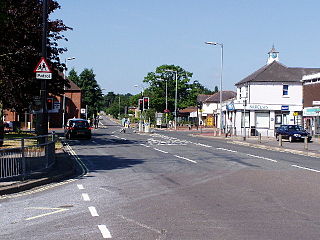
Hedge End is a town and civil parish in Hampshire, England. Situated to the east of the City of Southampton, it adjoins the districts of West End and Botley. Hedge End lies within the Borough of Eastleigh and is part of the Southampton Urban Area. The original hamlet developed on Botley Common after 1250 when it was granted to the men of Botley as common pasture. In 1267, royal charters allowed Botley to hold an annual fair and a weekly market on the common which eventually became a market town.
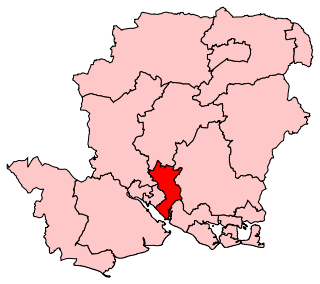
Eastleigh is a constituency represented in the House of Commons of the UK Parliament since 2019 by Paul Holmes, a Conservative.
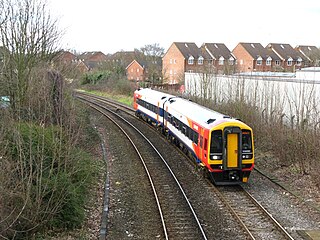
The Eastleigh–Romsey line is the railway line from Eastleigh to Romsey in Hampshire, England. At Eastleigh, trains join the South West Main Line for onward travel to Southampton. At Romsey most trains terminate. The line is not electrified and all trains are diesel-powered.

Eastleigh railway station serves the town of Eastleigh in the county of Hampshire in England. It is located on the South West Main Line and is the junction station for two other routes, the Eastleigh-Fareham Line and the Eastleigh-Romsey Line. It is 73 miles 35 chains (118.2 km) from London Waterloo. South of the station are Eastleigh Railway Works and Eastleigh Depot.
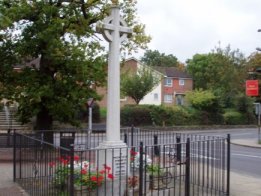
Fair Oak is a large village to the east of the town of Eastleigh in Hampshire, England. Together with the village of Horton Heath, which lies to the south, it is part of the civil parish of Fair Oak and Horton Heath.
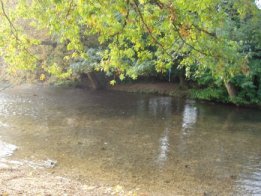
Bishopstoke is a village and civil parish in the Eastleigh district of Hampshire, England. It is recorded as "Stoke" as early as 948 AD when King Eadred granted land there to a thegn called Aelfric. Stoke later came into the possession of the Bishops of Winchester, giving rise to the modern name. The village is about a mile east of Eastleigh town centre, and is on the eastern bank of the River Itchen. It adjoins Fair Oak on the east.

Monks Brook is a river in the English county of Hampshire. It is a tributary of the River Itchen, which it joins at a medieval salmon pool in Swaythling. The brook is formed from seven streams that rise in the chalky South Downs, with the official source of Monks Brook being known as Bucket's Corner. Monks Brook drains a clay catchment of 49 square kilometres (19 sq mi). The brook is designated a main river, which means the operating authority for managing it is the Environment Agency, not the local government authorities for the areas through which the river runs.

Horton Heath is a semi-rural village which forms part of the civil parish of Fair Oak and Horton Heath in the borough of Eastleigh in Hampshire, England. The village is about three miles southeast of Eastleigh town centre, and adjoins the village of Fair Oak.

Wyvern College is a coeducational secondary school with academy status for students in the villages of Fair Oak, Bishopstoke, Horton Heath, Upham and Durley in southern Hampshire. The college is for students aged 11–16 and post-16 students go on to local sixth form colleges such as Barton Peveril and Eastleigh College, which are located in the neighbouring town of Eastleigh. It currently has over 1300 students, 95 teaching staff and 80 support staff.

Michael Douglas Thornton is a British politician and former Liberal Democrat Member of Parliament for Eastleigh in Hampshire. He was elected at the Eastleigh by-election held on 28 February 2013, a seat which he lost at the 2015 general election.

Allington is a small settlement in the Borough of Eastleigh, Hampshire, England, located at the northern extremity of the civil parish of West End.

The 2017 Hampshire County Council election took place on 4 May 2017 as part of the 2017 local elections in the United Kingdom. All councillors were elected from electoral divisions by first-past-the-post voting for a four-year term of office. The electoral divisions were somewhat changed from the previous election, with some being split, merged or with boundary changes. No elections were held in Portsmouth and Southampton, which are unitary authorities and hold their elections in other years. Similarly the districts within Hampshire did also not hold elections this year.

Fair Oak Lodge is a former country house in the village of Fair Oak, Hampshire. Much of the original estate has been built upon with modern housing, but the house itself survives and is owned by the Hampshire Christian Education Trust, who operate the King's School from the building. The two entrance lodges to the property also still survive as do some of the woodland, ponds and specimen trees that formed part of the estate.
Lieutenant-Colonel Sir Samuel Raymond Jarvis was an army officer who served as High Sheriff of Hampshire.


















